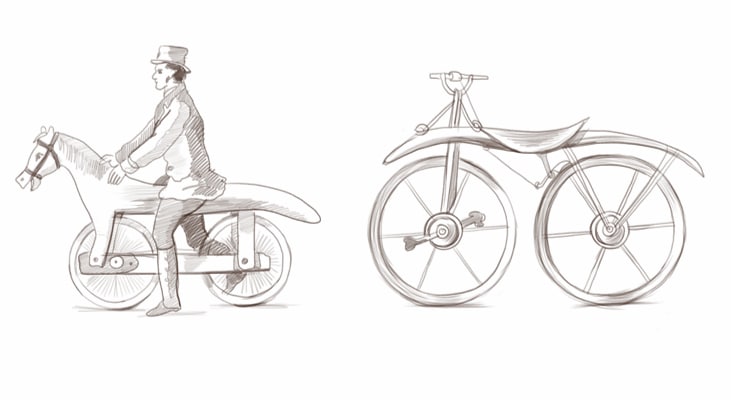Why Do Startups Fail? 5 Things To Avoid
Article onBusinessThere are many reasons why new startups fail. We describe 5 critical mistakes you have to avoid in order to achieve success!

There are always a multitude of factors as to why startups fail, but if you’re wanting to know some of the basic risks that you have to take when founding a startup – this article is exactly what you need. We’ll talk about common startup mistakes that can cost you a lot, and how avoiding them can increase your chances of launching a ground-breaking product!
Everyone knows that most of today’s top brands began their stories in bedrooms, university dorms, and dark garages with close to zero budgets. We call these companies “startups”. They have proven that you don’t need years of experience, hundreds of employees, and millions of dollars to found a successful company – only the idea matters.
After the first few success stories, the world went crazy with the idea of startup companies. However, along with all the success stories, there have been thousands of startup failure cases, and this number continues to grow.
Why do startups fail? Let’s take a look at some of the most common reasons.
Startup Mistake #1: Hiring the Wrong Team Can Lead To Failure

An idea is the most important part of a startup story, but a great team closely follows. The team is responsible for implementing your idea.
A startup is (almost) always short on money, and so founders always do their best to reduce up-front expenses.
Aiming to save money, startups tend to hire freelancers: designers, developers, and test engineers. The advantage is obvious: their work costs less since you can hire a freelancer from a country with lower salaries. Even more, you don’t have to fully employ these professionals, and you only pay for the work done.
However, there is one major drawback that can ruin your startup from day one: freelancers are sometimes irresponsible. If you value your requirements and deadlines then you have to choose carefully and rely on feedback from the freelancer’s past customers.
Another disadvantage is poor communication, and this is not due just to language barriers or time zone differences. When working with several freelancers at the same time, you have to invest a lot more time and effort in proper project management. Even then, the quality of the end product still remains under question. This is one of the top reasons why startups fail.
Solution: Collaborate with a Reliable Development Agency
Partnering with a reliable agency, like brightseed. has a handful of advantages:
- Smooth Team Co-Operation
All team members, including developers, designers, QA engineers, and business analysts work collectively. They are able to discuss an issue or give feedback instantly, dramatically increasing the quality of the developed product and reducing development time. - Strong Background
With an agency, you usually profit from their experience with previous collaborations with other companies and startups. As a result, you can count on their insights and useful advice. - Long-Term Collaboration
An agency is interested in partnership and long-term projects. That’s why their teams put in more effort into developing you a quality, long term solution.
An agency’s hourly rate may scare you at first, especially when you compare it to the sum charged by the average freelancer. However, you always win in the long run by using a quality proven agency.
Startup Mistake #2: Lack of Market and Buyer Persona Research

After hiring your team, you can’t wait to start developing your product to match your expectations. However, it’s not you that’ll pay for that product, but your end users. That’s why you have to build a product that’s inline with buyer expectations.
Never skip market research. More often than not, there is already a product (or even a handful of products) that address the same problem that yours will. Simply copying those successful products is another reason why your startup may fail.
Solution: Carefully Research the Market and Target Audience of Your Product
This may seem like a waste of time at first, but believe us, careful research will save you time and money in the future.
Market research is done with a simple aim: to find out who your competition is. When you know what’s already being offered, you can not only match exactly what the buyer is already expecting, but develop a product that has some competitive advantages as well. This is the only reason that customers may switch from existing solutions to the one you are offering.
Buyer persona research helps you understand your customer: their needs and preferences, what annoys them and what drives them. This information is crucial for building a product that is used, loved, and recommended on to others.
A free consultation with our business analyst will come in handy when determining what competitors you may already have, and finalizing who your target audience should be! Contact Us here!
Startup Mistake #3: Skipping the Prototyping Stage

Ok, so you already understand your competition and customers? There’s still a job to be done before the actual development begins. Let’s talk about prototyping!
A prototype is a high-fidelity version of the product that represents your application design, interactions, and features. Most founders skip this stage and move straight to MVP development, but this may be a reason why startups fail.
Solution: Develop a Low-Cost Interactive Prototype
An interactive prototype looks (and sometimes even feels) exactly like an application, but there’s no backend behind it. A prototype is used to visually present the app structure and interactions. This approach enables you to uncover any drawbacks or gaps and immediately eliminate them without a large expense. Its worth noting that any changes to an app’s architecture, in terms of design and workflow, later down the line are costly, and so having a well thought out prototype to start from will save you money in the long run.
As a result, you can polish your idea in the prototyping stage and then switch to development when you are 100% happy with the exact requirements and the expected outcome.
Another benefit to software prototyping is the ability to visually present your idea to early users or potential investors. An app prototype is much more convincing than artwork/sketches and/or descriptions. Also, you can get valuable feedback early on if people can see, and maybe even get a feel for, your idea. With proper app prototyping, you avoid one of the main reasons why startups fail.
Startup Mistake #4: Packing as Many Features into the MVP as Possible
Startup founders usually forget the essence of MVP development – releasing a product with the core feature in the shortest amount of time.
We often see startups release a fully-featured product and call it an MVP to excuse poor software quality and terrible user experience. Unfortunately, such a startup mistake is not a good way to develop an effective product.

Solution: Focus on One Core Feature in MVP Development
You have to define your product’s essential features and focus on them. For example, if your intention is to build a fitness app in the future, the central feature of your product should be “helping people get fitter”. As a result, your MVP could be a list of training exercises/programmes – a simple app that helps people understand what types of things they need to do in the gym to better help them get in shape, and not a diet planner, online shop, one-to-one video calls with a trainer, etc, as this all takes time and can’t be delivered quickly to users in the first instance, whilst maintaining a quality user experience.
Also, you should focus on as few features as possible while still ensuring that your product delivers real value. This will help you release the product in a shorter period of time and with a smaller budget. This is what the main intention of building a minimum viable product is: to get the application into the users’ hands as soon as possible, receive their feedback, and to start working with it, tailoring the product to the market’s needs.
Startup Mistake #5: Not Listening to Users Leads to Startups Failing

Some startups do everything right up until this point. When the product is then finally released into the market, they either relax, simply expecting to watch their app grow, or keep on brainstorming on how to improve the product.
Even though the second option is a bit better, it’s still wrong. You don’t have to rely on your own ideas. It’s much better to listen to the people who will ultimately be paying for your product – your customers.
Solution: Work with Feedback from Your Users
After launching an MVP, your users should become your best friends, the source of your inspiration, ideas, and motivation.
How do you get their feedback? Ask for it! The users of your MVP are usually ready and eager to help. They will be pleased to contribute to a product they personally use, especially if there’s an incentive. If you implement one of the features suggested by your customers – they’ll become true ambassadors of your brand!
User ideas are much more valuable than your own – they reflect the true needs of the target audience. You should adhere to them, even if they don’t match your own vision for the product!
Conclusion
Running a startup may sound adventurous and fun, but its a risky thing to undertake. Many common mistakes are waiting to trip you up along the way, leading to why your startup may fail before its even really got going! The percentage of startups that fail is 90% – by avoiding the mistakes listed above in this article, you’re much more likely to make it into the winning 10%! Good luck!


